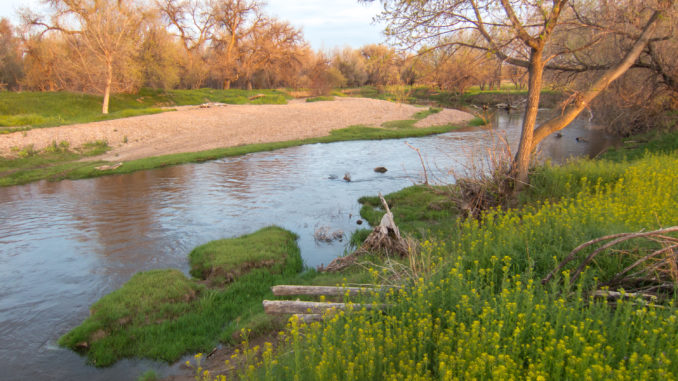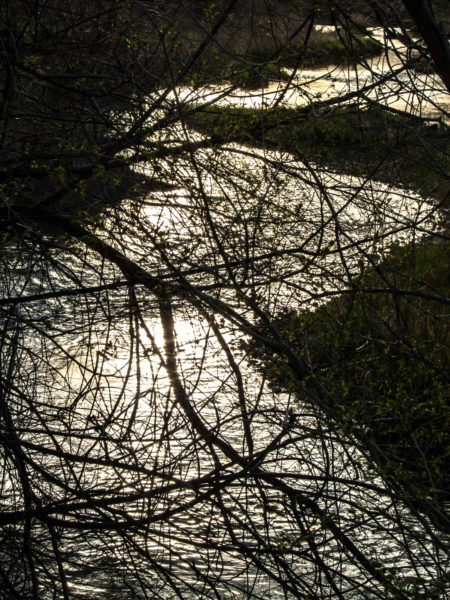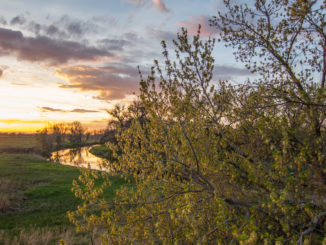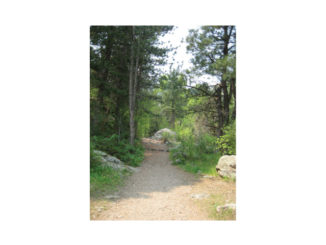
Part 2 of a series on the Poudre River
R. Gary Raham
[email protected]
With photographs by John Fielder
Thomas Hornsby Ferril, Colorado journalist and one-time Colorado poet laureate wrote,
“Here is a land where life is written in water,
The West is where water was and is.”
In the early 19th century, when Zebulon Pike and Stephen Long explored western territory that would eventually become Colorado, they described the area as a desert, unfit for farming. They speculated it might serve as a natural barrier to westward expansion. Sandy, water-sparse riverbeds meandered across a prairie dominated by cactus, sage and a sea of hardy grasses.
On July 7, 1858, William Green discovered gold near the mouth of Dry Creek as it empties into the South Platte near present-day Englewood. People flocked to what would become Denver, coaxing subterranean water from beneath the riverbed, if necessary. Denverites discovered in 1864 that western water could be both furious and fickle. A disastrous flood washed away much of the fledgling town.
But Colorado greened up nicely, if you diverted some water from the South Platte with a big ditch. An intense blue sky arched overhead most of the time, and humidity was low. What desert? Besides, many at the time believed that “rain would follow the plow.” In other words, water used to grow crops would evaporate, create more rain clouds, and transform the land.
Patricia Nelson Limerick, professor of history and environmental studies at CU Boulder, tells the story of western water and early Denver in her 2012 book, A Ditch in Time. The story reads much the same in Northern Colorado. Limerick says one could paint those who engineered water distribution as “bad guys,” but she concludes that, for the most part, water developers thought they were providing a valuable service and advancing the progress of mankind. Many thought that getting rich in the process was their due.
Limerick, while not an apologist for these developers and engineers, feels that all of us are part of the problem, “because those of us who live in the American West today are dependent on, complicit with, and indebted to the organizations and institutions that disrupted the ecosystems and disturbed the landscapes that, a little late in the game, we came to treasure.”
With what, exactly, are we complicit? How do we all need and use the water from our rivers, including the Poudre? One of the John Fielder photographs that complement this article shows the Poudre through a tangle of branches that might serve as a metaphor for the myriad ways we use water resources in our state.

Basic human services
Each of us uses water for drinking, washing, and disposing of waste. We usually take the availability of water for these services for granted, until problems arise. When human waste gets into the water supply, for example, the bacterium that causes typhoid flourishes and people die. This happened in many cities, including Denver, in the 19th century. Metropolitan areas have historically diverted water from faraway rural and/or mountainous areas to maintain water purity.
Not all water comes from rivers. Some water percolates through soil into subterranean reservoirs or aquifers. Just like our bank accounts, this resource can be renewable, if withdrawals don’t exceed deposits. Some deposits beneath Colorado stopped 10,000 years ago when the most recent ice age officially ended.
Agriculture
Growing the kind of food we choose to eat requires much more water than the 12” to 14” per year that typically falls onto Colorado’s high plains. Much of the nutritional largesse we have enjoyed through the 20th and early 21st century has come from diverting aboveground water, overusing aquifers, and/or transporting food from elsewhere.
Commerce
The oil and gas industry uses considerable water to extract petroleum products from the ground. The beer industry features Rocky Mountain pure water in the manufacture of its products. Many other industries depend on readily available, abundant sources of water.
Recreation
Coloradans and visitors to the state fish, hike, hunt, boat, take pictures and play sports in our great outdoors. A 2014 report by the state of Colorado (http://cpw.state.co.us/Documents/Trails/SCORP/SCORPOnlineReport.pdf ) showed that outdoor recreation generates about $35 billion in revenues and creates over 300,000 jobs.
Environmental services
Most of us tend to ignore this last category. It includes the services rendered by the network of plants, animals and microbes that keep the environment we depend on alive and healthy. When habitats are sufficiently large and intact, they perform these complex services without our intervention. Many biologists and ecologists have proposed that we should put an economic dollar value on these critical services. Stephen R. Carpenter, for example, with the Millennium Ecosystem Assessment, says, “We have these indicators like gross national product to estimate the value of goods and services produced in an economy. We don’t really have a state of the environment indicator.” See https://news.wisc.edu/study-put-a-price-tag-on-environmental-services/
Knowing how and why we use water in Colorado provides a first step for making decisions about dealing with growth and development. The next article in this series will look at how we, as citizens, can make water-wise choices with the options currently available.
Support Northern Colorado Journalism
Show your support for North Forty News by helping us produce more content. It's a kind and simple gesture that will help us continue to bring more content to you.
BONUS - Donors get a link in their receipt to sign up for our once-per-week instant text messaging alert. Get your e-copy of North Forty News the moment it is released!
Click to Donate



